It was interesting to see that your suggestions on sewing with knits were representative of the sewing community as a whole. About half insist that you can successfully sew knits on a regular sewing machine; the other half insist that life is immeasurably better if you have a serger/overlocker and coverhem machine.
I will experiment with my basic sewing machine before making any investments in more advanced equipment, but the discussion did inspire me to research the types of machines and address some of my fears.
My first fear is cost.
It took me months of deliberation before I invested a whole $140 in my new Singer last year. Now, of course, I am thrilled that I have it, and I can’t believe it took me so long to make the decision. I’d imagined that sergers were in the $1000 range and I would never be able to spend that much. When I found that there were functional, popular machines available in the $200 - $400 range, I had to reconsider.
The next fear is the difficulty of use. I don’t think there is a sewist out there who hasn’t felt daunted by a new serger with its row of slots, loops, needles, blades, and dials, all of which must be threaded and adjusted perfectly in order to get a good result.
One of the 48 pages of a Singer serger instruction manual
The consumer reviews and help sites are full of desperate people ready to tear their hair out or throw the machine out the window because they can’t get the tension right. But, since some machines also have glowing reviews from happy users, it must be possible to learn eventually. (I see that the Brother that Anita recommended is very popular on all the sewing sites – that’s good news!)
Brother 1034D
Another problem (not a fear, just a limitation) is my work space. I can barely push my fabric through my regular sewing machine with all the stuff stacked up on and around my work table. Where on earth would I put a serger, and how would I get to it in order to use it? Another major reconfiguration of the room would be required.
And finally, there’s the fear of losing ground on that slippery slope of “I just need one more thing.” So maybe I have a sewing machine and a serger. I expect I would immediately decide to need a coverhem machine, because who wants a silly messy hem on the T-shirt, when you’ve got nicely overlocked seams. Once I have the sewing machine, the serger, and the coverhem, no doubt I would decide I don’t want to do embroidery by hand anymore, so I need a fancy sewing machine that does programmable embroidery. At that point, why not take up quilting and invest in an industrial free-arm machine? You can see where I’m going with this. I can control myself (really, I can), but if I do invest in additional technology, I will have to be very sure it does everything I’ll need in the foreseeable future.
As I mentioned, I’ll be testing out different methods with the current machine and will share any interesting findings. In the meantime, any additional suggestions on sergers (particularly overlock/coverhem combo machines) are very welcome!
Katrina





























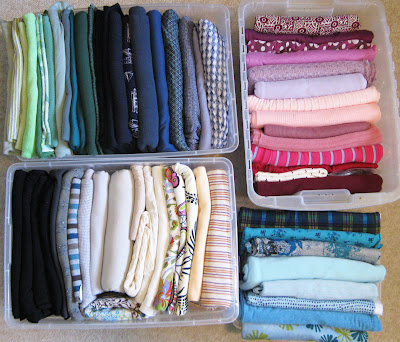 A LOT! Some have been waiting around for ten years or more, others are new.
A LOT! Some have been waiting around for ten years or more, others are new. There are cottons, silks, rayons, bamboo, metallic, acrylic, nylon, and polyester.
There are cottons, silks, rayons, bamboo, metallic, acrylic, nylon, and polyester. Jersey, sweater knit, stretch lace, stretch terry, double knit, ribbed knit, burnout, textured, pique, and an ITY or two.
Jersey, sweater knit, stretch lace, stretch terry, double knit, ribbed knit, burnout, textured, pique, and an ITY or two.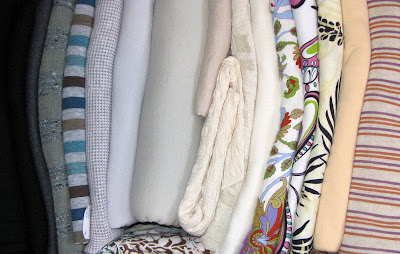 Dots, stripes, plaids, geometrics, botanical, paisley, and nautical prints, along with solids in almost every color.
Dots, stripes, plaids, geometrics, botanical, paisley, and nautical prints, along with solids in almost every color. I need to start sewing some of these.
I need to start sewing some of these. 



 You can see the pollen attached to the bees’ legs. The one on the lower left has just arrived and has only a small amount, while the one on the upper right has been collecting for some time and has very large pollen sacs.
You can see the pollen attached to the bees’ legs. The one on the lower left has just arrived and has only a small amount, while the one on the upper right has been collecting for some time and has very large pollen sacs. No – it’s a sneaky syrphid fly that mimics a honeybee. It had me completely fooled until I blew up the photo and saw its body shape.
No – it’s a sneaky syrphid fly that mimics a honeybee. It had me completely fooled until I blew up the photo and saw its body shape.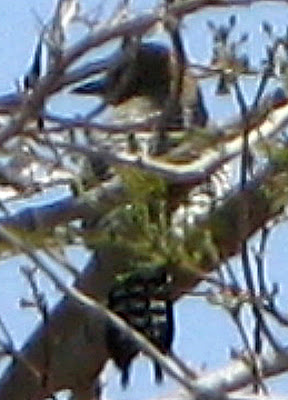

 Can you see the thrasher hiding on the left? His orange eye looks like one of the berries.
Can you see the thrasher hiding on the left? His orange eye looks like one of the berries.


 He’s slightly more aloof (I didn’t have the water running).
He’s slightly more aloof (I didn’t have the water running).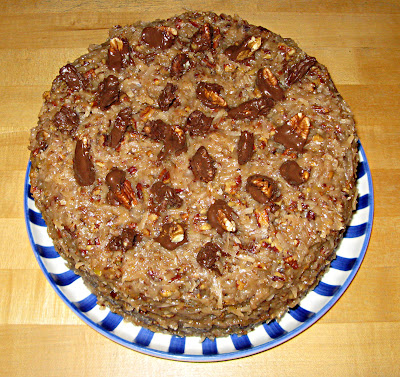
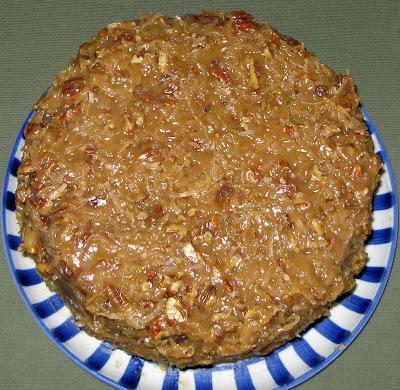 Frosting sliding off. Thumbprint on the side. No nutty decorations. Sticky plate. This is why he does the baking. But it tastes good! (Yes, we already got into it!)
Frosting sliding off. Thumbprint on the side. No nutty decorations. Sticky plate. This is why he does the baking. But it tastes good! (Yes, we already got into it!)